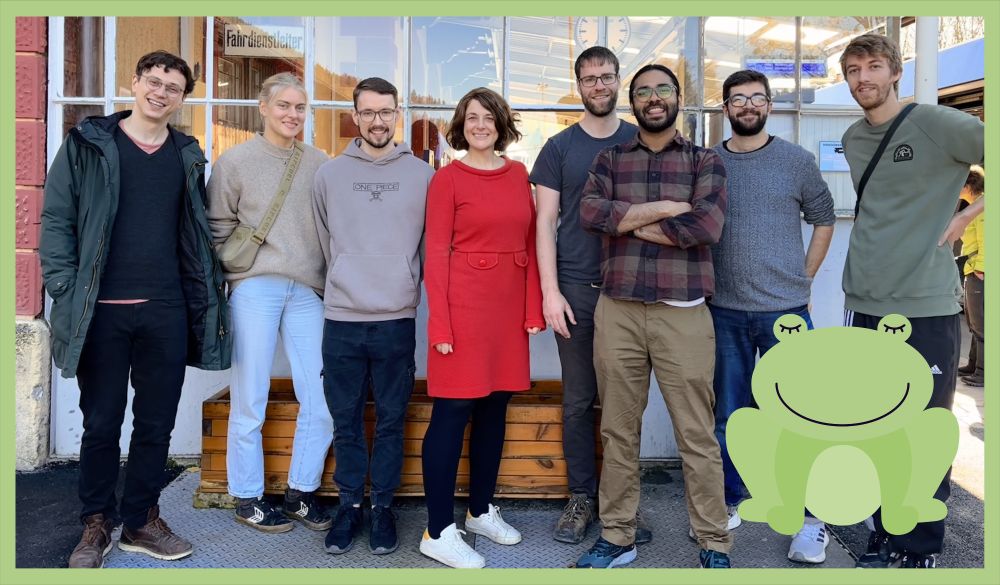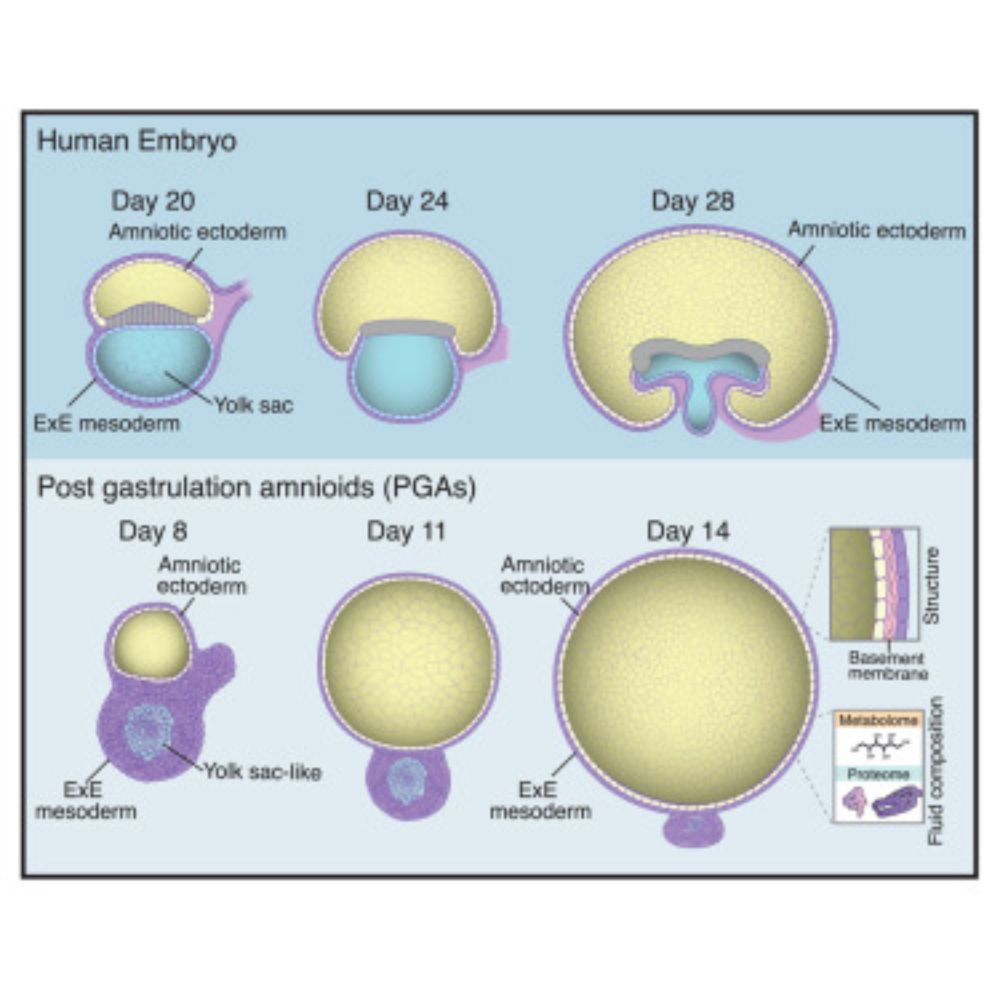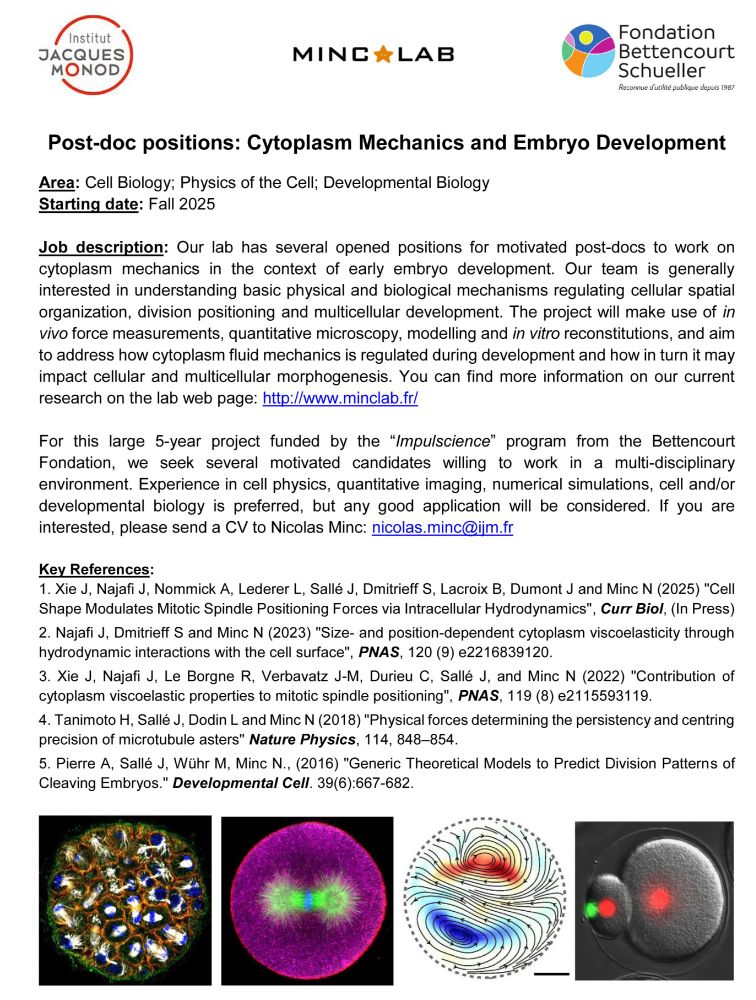
🚨 Late preprint alert!
Why do biological process rates scale nonlinearly with temperature, deviating from the straight line on an Arrhenius plot? The key may lie in their inherent complexity!
More in thread and here: doi.org/10.1101/2025...
@lendertgelens.bsky.social
Part-time physicist-turned-biologist studying early embryos and the cell cycle @KU Leuven, full-time dad to two active boys. Visualizing academic data trends in Flanders. www.gelenslab.org | https://academic-compass.be/en/

🚨 Late preprint alert!
Why do biological process rates scale nonlinearly with temperature, deviating from the straight line on an Arrhenius plot? The key may lie in their inherent complexity!
More in thread and here: doi.org/10.1101/2025...

Thanks for the great visit! You can find more about our work here:
www.nature.com/articles/s41...
www.biorxiv.org/content/10.1...

Had a fantastic day yesterday at the Collaboratorium. Thanks to Jordi @jgojalvo.bsky.social @dsb-lab.bsky.social for hosting me, to Bastien for organizing, and to Vikas @viktri08.bsky.social, Bastian, Eric @elatorre.bsky.social, Oriol and all for the stimulating discussions!
#BCNCollaboratorium

Please allow me to introduce... our new preprint 🎉 Together with Michael Zhao, Anna Erzberger and Alexander Aulehla, we investigate pattern formation due to aggregation in confined systems.
You can find it at arxiv.org/abs/2509.08533
@michaelzhao.bsky.social @erzbergerlab.bsky.social
Looking forward to it!!
18.09.2025 13:34 — 👍 10 🔁 3 💬 0 📌 0
Fresh from the press💥 We asked what happens when you evolve gene regulatory networks computationally at scale. Do general principles of GRN evolution jump out? Is the process predictable? Read on to find out @prxlife.bsky.social @crick.ac.uk @ucl-ipls.bsky.social 👉 journals.aps.org/prxlife/abst...
16.09.2025 19:46 — 👍 44 🔁 18 💬 2 📌 0Drs. Borzo Gharibi, Silvia Santos, and a team at @crick.ac.uk generated an ESC-derived 3D model of the post-gastrulation #amnion.
📄 @cellpress.bsky.social - bit.ly/45bJs0c
🎤 bit.ly/4kE4eKf

Oops, that first picture looks completely different than on my computer. Here it is again, this time without the background, hopefully better.
03.09.2025 15:47 — 👍 2 🔁 1 💬 0 📌 0I started these experiments in Jim Ferrell’s lab at Stanford over 10 years ago, so it’s special to see this finally out. Huge thanks to @janrombouts.bsky.social and Franco Tavella (from Qiong Yang’s lab, also a Ferrell alum) for pulling this project over the line!
03.09.2025 15:42 — 👍 0 🔁 0 💬 1 📌 0
Experiments in Xenopus extracts confirmed that both mechanisms act in parallel: interphase and mitosis scale differently with temperature, and cyclin synthesis is especially sensitive. Together they explain the Arrhenius-like scaling at intermediate T and its breakdown at extremes, across species.
03.09.2025 15:30 — 👍 0 🔁 0 💬 1 📌 0
The puzzle isn’t just why cycles look Arrhenius, but why and how they deviate.
Our modeling shows that mismatched temperature sensitivities of regulatory enzymes and biphasic cyclin synthesis act in parallel, creating systematic departures from simple scaling.

🧵Why do early embryonic cell cycles speed up with temperature almost like simple chemical reactions, but not quite? 🌡️
Across frogs, fish, worms, and flies we found a shared scaling law, and uncovered why deviations from Arrhenius behavior emerge.
👉 doi.org/10.1038/s41467-025-62918-0
Deep thanks to all co-authors and collaborators. Special shoutout to Liliana Piñeros (now a postdoc in the lab of co-author Rebecca Heald at UC Berkeley, doing fantastic new work!) and to @nikitaphysics.bsky.social in our group: you both really pulled this story together!
02.09.2025 20:54 — 👍 1 🔁 0 💬 0 📌 0
This scaling echoes what embryos do naturally: at the midblastula transition (MBT), cycles slow as the N/C ratio rises and transcription begins. We find that cytoplasm–nucleus coupling can already slow the clock before genome activation, a complementary layer of timing control.
02.09.2025 20:49 — 👍 1 🔁 0 💬 1 📌 0
Our model backs this up: instead of a single cytoplasmic cell cycle oscillator, the system becomes two coupled oscillators — nucleus and cytoplasm — dynamically linked through import/export. This nuclear–cytoplasmic coupling slows the cycle as the nucleus grows.
02.09.2025 20:45 — 👍 0 🔁 0 💬 1 📌 0
🧵Does the nucleus set the cell cycle clock? 🕒
In frog egg extract “mini-cells” we see that as nuclei grow, cycles slow down. The period scales with the nuclear-to-cytoplasmic ratio, across Xenopus species, and even when DNA replication or transcription are blocked.
👉 doi.org/10.1016/j.cu...

A plot showing the duration of the early embryonic cell cycle of 5 different species as a function of temperature. Higher temperatures mean faster cycles, up to an optimum, beyond which the cycles slow down and eventually stop.
Many years in the making but now finally online! What determines the temperature scaling and thermal limits of cell cycle duration in embryos? We tackled the question using a combination of dynamical systems analysis and experimental measurements in embryos and in cycling Xenopus extracts.
29.08.2025 14:06 — 👍 32 🔁 11 💬 2 📌 1Fantastic, very cool!!
18.06.2025 17:11 — 👍 1 🔁 1 💬 0 📌 0BOOM💥Martina was on fire at the recent #Biologists100 meeting on Liverpool, sharing her research on cell cycle oscillations. #proudPI
03.06.2025 13:32 — 👍 7 🔁 1 💬 0 📌 0
✨We are looking for a PhD student interested in physical cell bio, imaging 🔬, biochemistry, #Xenopus 🐸 & #microtubules ✨
Join us @mpiib-berlin.mpg.de!

Beautiful work from @santoslab.bsky.social
A 3D model of human amnion from hESCs
These recapitulate amniotic sac development, revealing GATA3 as key amniogenesis driver & autoregulatory BMP/Wnt feedback loops
And check out the size of them in the video
www.cell.com/cell/fulltex...


We can't believe #EESTCBio is over! 😱
Thank you to the organisers, speakers, and participants for creating such a vibrant space for critical thinking. It was a joy to see you exchange ideas, challenge assumptions, and explore new perspectives 💡
We hope to see you again at the next edition! 👋

3️⃣"Physics of the Early Embryonic Divisions Workshop – Microtubules, energy and cell fate decisions in early embryogenesis" by @olgaafonso.bsky.social, @shuzokato.bsky.social & Helena Cantwell
thenode.biologists.com/physics-of-t...
Thank you to everyone who wrote these reports!
(3/3🧵)

2️⃣ "Physics of the Early Embryonic Cell Divisions: Feedbacks, Flows and Information" by Claudio Hernández-López and @singh29aditya.bsky.social
thenode.biologists.com/physics-of-t...
(2/3🧵)

Last year, 30 developmental biologists and biophysicists got together for the 'Physics of the Early Embryonic Cell Divisions' Workshop. Find out what happened (1/3🧵)
1️⃣Building Bridges Between Biology and Physics by @irene-yuting-li.bsky.social @isaacsiuwong.bsky.social & @lena-schindler.bsky.social
Excellent question: 40 1-foot ducks, clearly! ;)
26.03.2025 21:27 — 👍 0 🔁 0 💬 0 📌 0Wonderful time at #biologists100 and proud to work with Martina and Nicole! Don’t miss their exciting work on how the cytoskeleton and temperature determine cell cycle timing in early frog and fish embryos—posters 244 & 277. I’ve also got one on temperature scaling mechanisms —#17! 🐸🐟⏰
25.03.2025 15:48 — 👍 7 🔁 1 💬 0 📌 0I am recruiting an #ERC funded PostDoc to work on the evolution of vertebral counts in cichlids. This is an experimental project & will be looking for candidates with experience generating reporter lines, live-imaging and experimental embryology.
Application deadline: 25th Feb.
tinyurl.com/33jbu8fa
Congratulations, beautiful work!
05.02.2025 12:44 — 👍 1 🔁 0 💬 1 📌 0
Our lab has multiple open positions for post-docs to study the regulation and function of cytoplasm mechanics during embryo development.
Details below 👇👇
Please Repost !!!
@ijmonod.bsky.social @cnrs.bsky.social